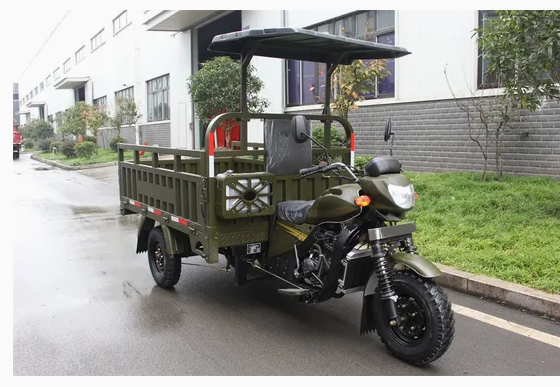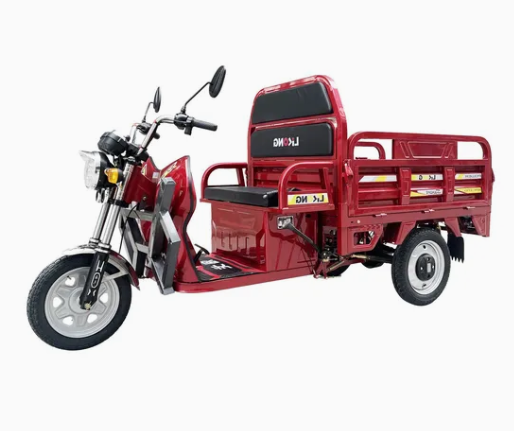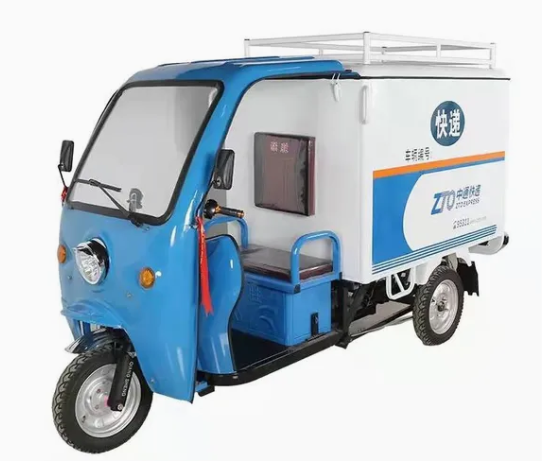Global Electric Cargo Three-Wheeler Market: Development Trends and Future Opportunities
News 2022-06-14
In recent years, the electric cargo three-wheeler market has emerged as a critical segment within the broader electric vehicle (EV) industry. Driven by urbanization, environmental regulations, and the growing demand for last-mile logistics solutions transformation. According to industry reports, the global electric cargo three-wheeler market is projected to experience substantial growth between 2025 and 2031, with Asia leading the charge.
1. Industry Overview
The electric cargo three-wheeler industry traces its roots to the late 20th century, initially gaining traction in developing economies as a cost-effective solution for short-haul transportation. In China, for instance, the industry began to urbanization and the rise of small-scale commerce. Today, these vehicles are indispensable in sectors like logistics, agriculture, and waste management, offering low operating costs and zero tailpipe emissions.
Key players such as Chongqing Zongshen Tricycle Manufacturing Co., Ltd., Dongguan Tailing Electric Vehicle Co., Ltd., and Henan Zipstar Tricycle Manufacturing Co. dominate the market. These companies have leveraged technological advancements—such as improved battery efficiency and modular design—to cater to diverse consumer needs.

2. Market Dynamics
2.1 Growth Drivers
- **Environmental are incentivizing EV adoption through standards. For example, China’s “Blue Sky” initiative has accelerated the replacement of diesel-powered trikes with electric models.
- E-Commerce Expansion: The logistics boom, fueled by platforms like Amazon and Alibaba, has heightened demand for reliable last-mile delivery vehicles. Electric three-wheelers, with their maneuverability for navigating congested urban areas.
- Technological Innovations: Lithium-ion batteries now offer ranges exceeding 120 km per charge, while smart features like GPS tracking enhance operational efficiency.
2.2 Challenges
- Infrastructure Gaps: Charging infrastructure remains underdeveloped in rural regions, limiting market penetration.
- Battery Costs: Despite price reductions, batteries still account for 30–40% of total vehicle costs, posing a barrier for price-sensitive buyers.
- Regulatory Fragmentation: Inconsistent policies across regions complicate market entry for manufacturers.
3. Regional Insights
Asia dominates the global market, contributing over 60% of sales in 2023. India and China are pivotal, driven by dense populations and thriving informal economies. In India, for instance, electric three-wheelers constitute nearly 85% of the country’s EV fleet, reflecting their role in daily commerce.
Europe and North America, though smaller in market share, are witnessing accelerated growth. European nations like Germany and France are integrating electric trikes into municipal services, such as waste collection and postal delivery, aligning with carbon-neutrality goals.
4. Competitive Landscape
The market is characterized by intense competition, with companies adopting divergent strategies:
- Cost Leadership: Chinese manufacturers focus on mass production to offer vehicles priced as low as $1,500, targeting budget-conscious buyers.
- Premiumization: European players like ECOTRIKE-BG Ltd. emphasize durability and advanced features, catering to commercial fleets willing to pay a premium.
- Vertical Integration: Firms such as Dongguan Tailing control the entire supply chain, from battery production to assembly, ensuring cost efficiency and quality control.
5. Future Trends
- Battery Swapping Networks: To address charging delays, companies are piloting battery-swap stations, enabling drivers to replace depleted batteries in minutes.
- Autonomous Technology: Trials of self-driving cargo trikes are underway in tech hubs like Shenzhen, promising to reduce labor costs.
- Circular Economy: Recycling programs for retired batteries are gaining momentum, aligning with global sustainability trends.
6. Investment Opportunities
niches:
- Cold Chain Logistics: Electric trikes equipped with refrigeration units are critical for perishable goods transport, a segment expected to grow at 12% annually.
- Rural Mobility Solutions: Affordable models tailored for agricultural use—such as crop transport—are underserved in markets like Southeast Asia and Africa.
Conclusion
The electric cargo three-wheeler market stands at a crossroads yet challenged by infrastructural and economic hurdles. For businesses and investors, success will hinge on agility—adapting to regional policies, leveraging innovation, and addressing the nuanced needs of both urban and rural consumers. As the world pivots toward sustainable mobility, these humble vehicles may well become the unsung heroes of the green transition.



